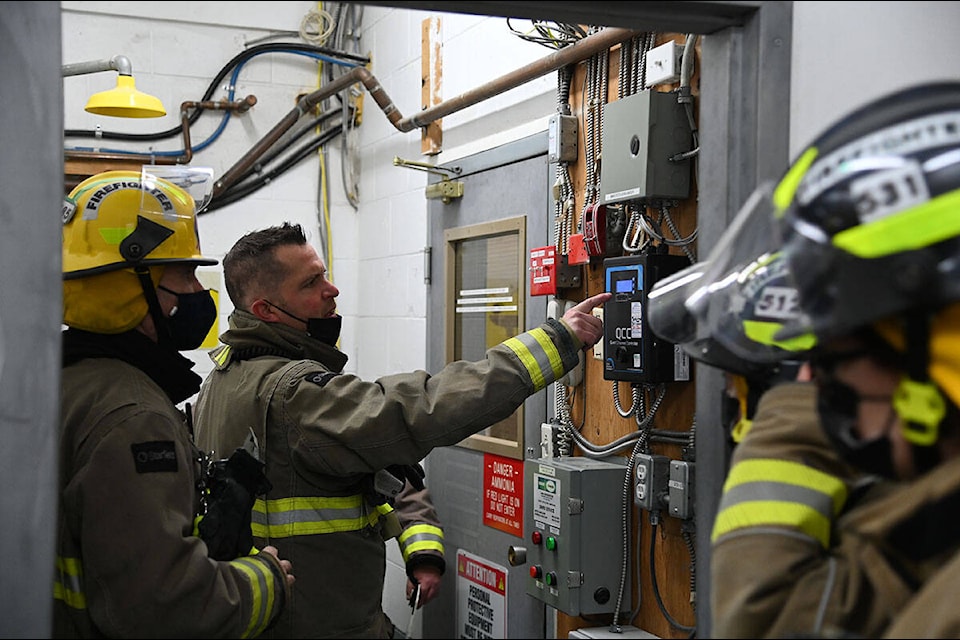Clearwater volunteer firefighters spread out across the North Thompson Sportsplex Thursday, as part of a training session to learn the ins and outs of rescuing a victim exposed to a potential ammonia leak.
Working in teams of three, the firefighters had just 10 minutes - due to Immediately Dangerous to Life or Health (IDLH) conditions - to get in and extract the victim. One crew entered the back of the arena where the ammonia charging system is located, while a Rapid Intervention Team (RIT) remained on standby outside, waiting to help rescue the victim or fellow firefighters.
After locating the victim, the crews radioed back to Incident Command. If the RIT team was required, Incident Command would send them to where they’re needed. Otherwise, the interior team would get the victim out in the safest way possible, and perform first aid if paramedics aren’t already on site.
“There’s always a constant communication back and forth,” said Clearwater Volunteer Fire Department Chief Mike Smith.
The simulation was the fire department’s latest weekly training session at the North Thompson Sportsplex. As part of the session, crews also discussed how to respond if the arena had to be evacuated in the case of an ammonia leak.
Ammonia, which is used in many refrigeration systems to create artificial ice surfaces in arenas and curling rinks, is a toxic gas that is corrosive to the skin and eyes and extremely toxic when inhaled, causing severe irritation of the nose and throat and potentially death, according to the Canadian Centre for Occupational Health and Safety.
The North Thompson Sportsplex, built in the ’70s, isn’t at huge risk from an ammonia leak as the District of Clearwater in 2000 replaced the entire ammonia-charged refrigeration plant, improving safety and reducing the ammonia charge. More recent changes reduced the charge from 2,000 pounds to just 150 pounds, while the ammonia is now contained in a mechanical room, said Roger Mayer, DOC’s community parks and facilities manager.
Despite the increased safety upgrades and maintenance, Smith said it’s vitally important Sportsplex staff are trained and that the fire department knows how the system works, where the ammonia is and the best way to enter the building. In 2017, three workers died inside an arena in Fernie after the frame chiller failed. The chiller more than 10 years past its life expectancy.
Smith noted the firefighters’ protective gear is fairly effective when dealing with a situation involving ammonia, as it has a moisture barrier underneath the outer layer that will provide some protection.
“If it’s in the air and it’s a little bit, our respiratory protection is pretty good,” said Smith, adding the main concern is skin contact.
During a debrief after the training, firefighters noted the training simulation went well.
The Clearwater Volunteer Fire Department currently has 17 regular members, but are always seeking more recruits. For more information visit their Facebook page or email fire chief@docbc.ca.
ALSO READ: Fires in cargo ship off B.C. coast may take days to put out: Coast guard
ALSO READ: TNRD considers vaccine mandate for staff, volunteers
newsroom@clearwatertimes.com
Like us on Facebook and follow us on Twitter
